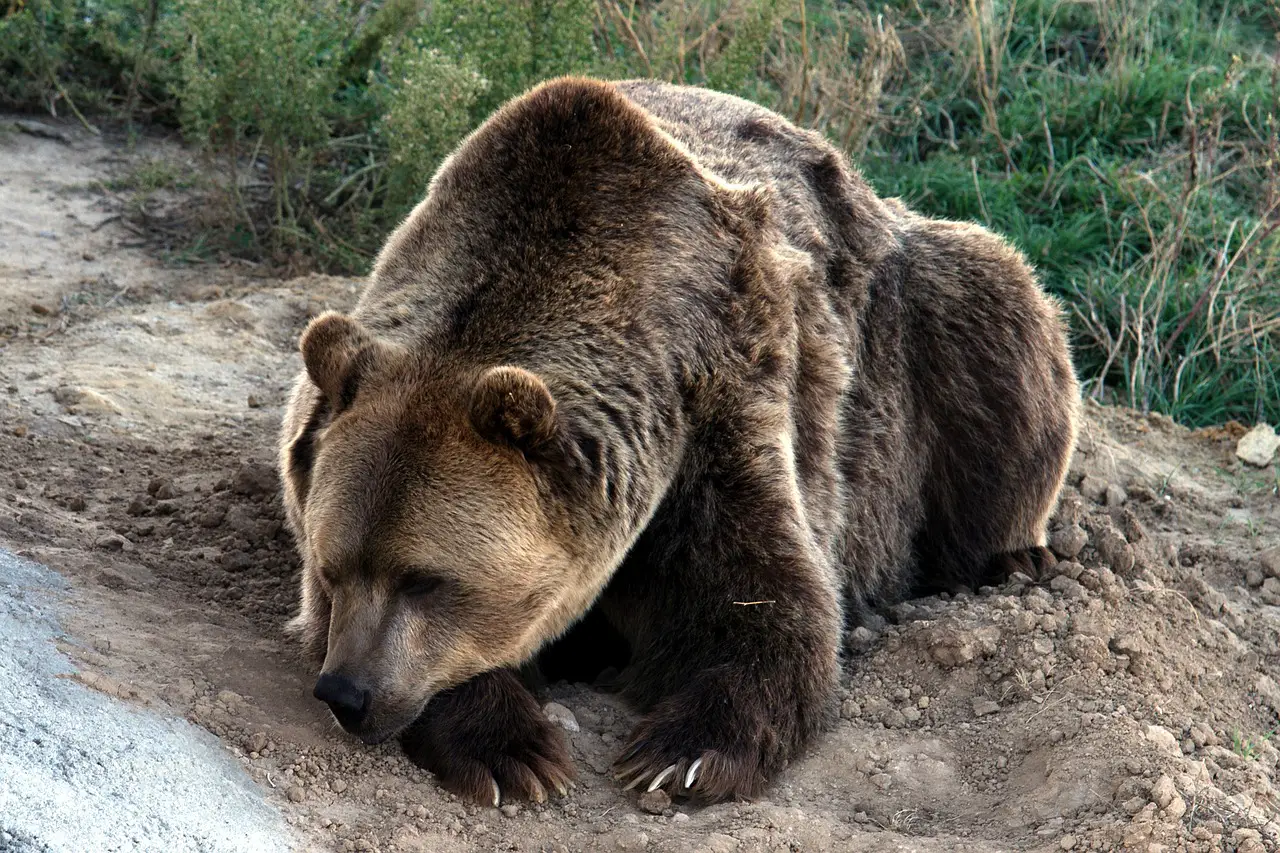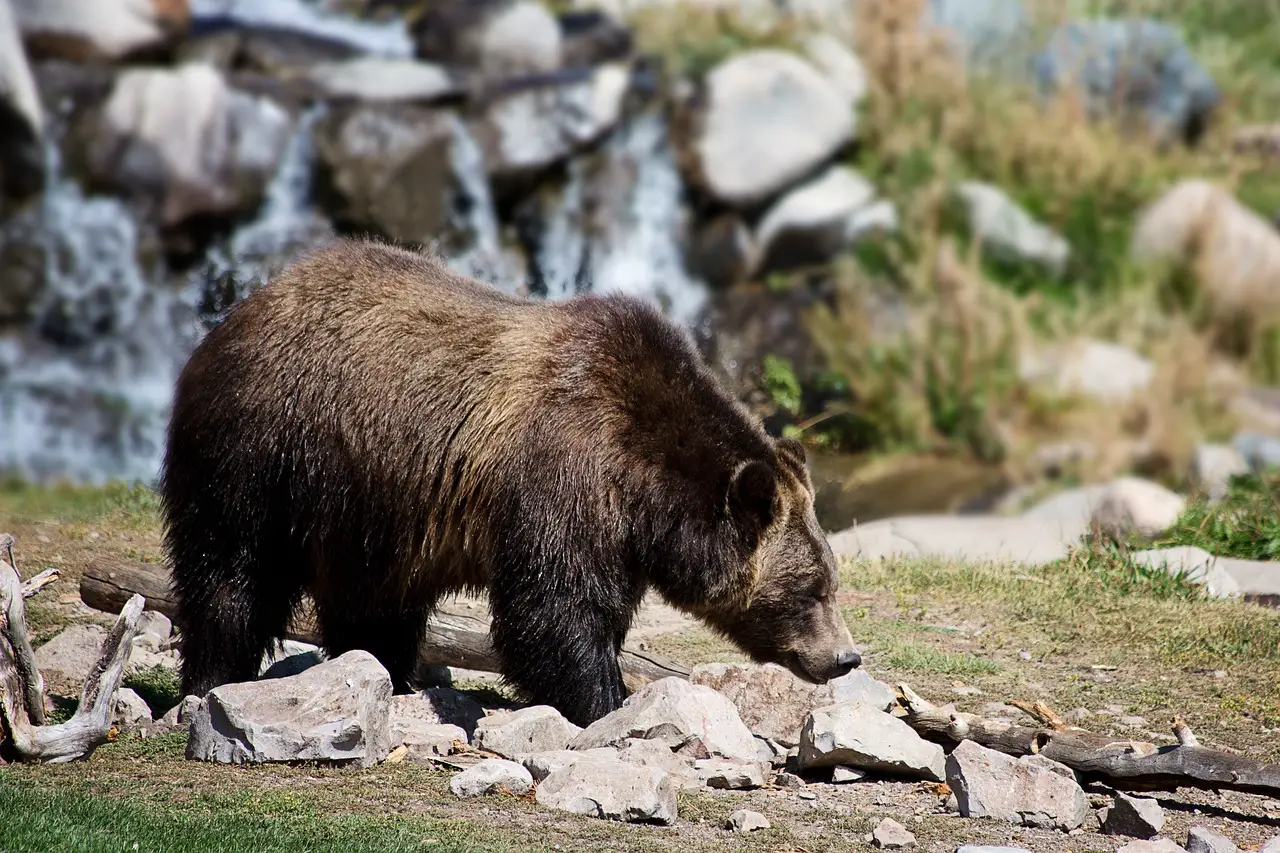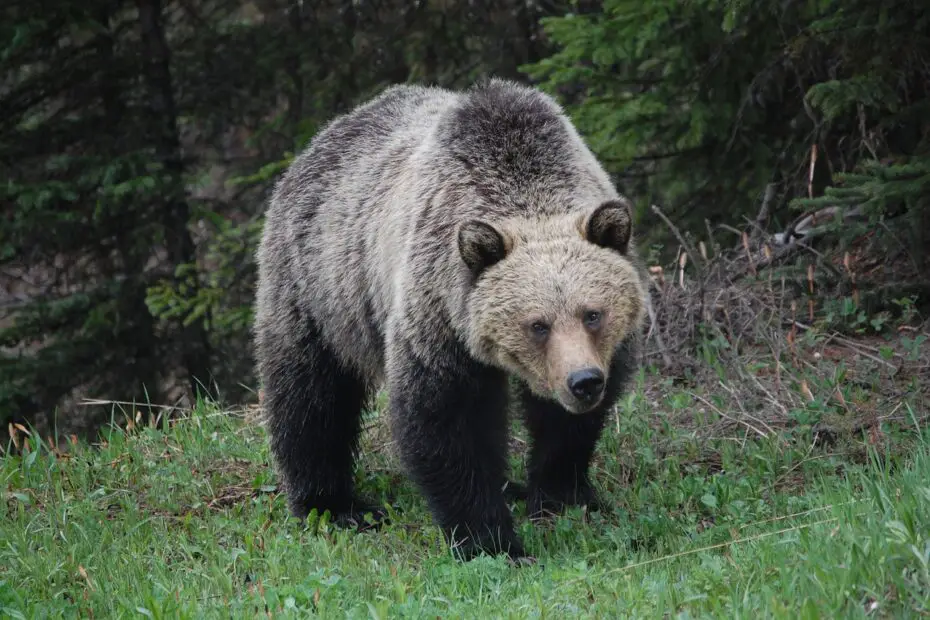Grizzly bears are known for their impressive size and strength, captivating the imagination of nature enthusiasts and wildlife lovers. In this article, we will explore the fascinating dimensions of grizzly bear size, including their physical characteristics, sexual dimorphism, and how they compare to other bear species. Additionally, we will discuss the factors that influence their size and the significance of their large stature in the natural world.
You may also want to read about grizzly bear vs polar bear.
Physical Characteristics
Grizzly bears possess remarkable physical attributes that contribute to their formidable presence in the wild.
Body Size and Weight
Grizzly bears are one of the largest land mammals in North America. Adult males, known as boars, typically weigh between 400 to 1,200 pounds (180 to 540 kilograms). Meanwhile, adult females, referred to as sows, generally weigh around 200 to 700 pounds (90 to 320 kilograms). These weight ranges can vary depending on factors such as habitat, food availability, and individual genetics.

Height and Length
On all fours, grizzly bears stand approximately 3 to 4 feet (0.9 to 1.2 meters) tall at the shoulder. When standing upright on their hind legs, they can reach an impressive height of 6 to 7 feet (1.8 to 2.1 meters). From nose to tail, grizzly bears measure around 6 to 8 feet (1.8 to 2.4 meters) in length.
Sexual Dimorphism
One notable aspect of grizzly bears is their sexual dimorphism, meaning there are distinct differences in size between males and females.
Male grizzly bears, or boars, are significantly larger than females, or sows. The size difference is particularly prominent in body weight, where adult males can be more than twice as heavy as adult females. The larger size of males is believed to be advantageous for competition during mating and establishing dominance.
Comparison with Other Bears
Among bear species, grizzly bears rank among the largest, although they are smaller than polar bears. While individual sizes can vary, grizzly bears generally outweigh black bears and are taller and longer in body length.
Factors Affecting Size
Grizzly bear size is influenced by various factors, including genetics and environmental conditions.

Genetics
Genetics play a significant role in determining the size potential of grizzly bears. Certain genes passed down through generations can influence their overall size and body structure. However, it’s important to note that genetics alone do not solely determine an individual bear’s size, as environmental factors also come into play.
Environmental Factors
The availability of food resources, such as salmon, berries, and other protein-rich sources, greatly impacts the growth and development of grizzly bears. Access to abundant and nutritious food can lead to larger size and robust physical condition. Conversely, periods of food scarcity or competition for resources may result in smaller sizes or slower growth rates.
Significance of Grizzly Bear Size
The large size of grizzly bears serves several purposes in their natural habitat. It provides them with a formidable appearance, deterring potential threats and minimizing the risk of predation. Additionally, their size contributes to their role as ecosystem engineers, influencing the landscape through activities such as digging and foraging.
Conclusion
Grizzly bears captivate our attention with their majestic size and presence in the wild. Their physical characteristics, sexual dimorphism, and comparison to other bear species highlight their unique attributes. Factors such as genetics and environmental conditions shape their size, while their large stature holds significance in their ecological role and survival strategies.
FAQs
1. Are grizzly bears the largest bears in the world? While grizzly bears are impressive in size, they are smaller than polar bears, which are the largest bear species.
2. How tall can a grizzly bear stand on its hind legs? A grizzly bear can stand up to 6 to 7 feet tall on its hind legs, showcasing their incredible height.
3. Do all grizzly bears have the same size? No, individual grizzly bears can vary in size due to factors such as genetics, food availability, and environmental conditions.
4. Are female grizzly bears much smaller than males? Yes, female grizzly bears, known as sows, are generally smaller and lighter than males, or boars.
5. Why is the size of grizzly bears important for their survival? The large size of grizzly bears provides them with physical advantages, such as protection and dominance, as well as influencing their ecological impact on the environment.
